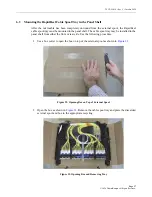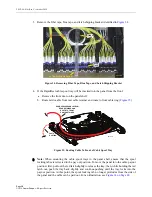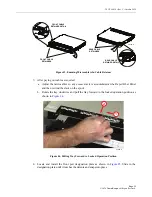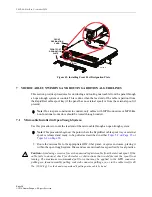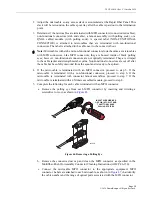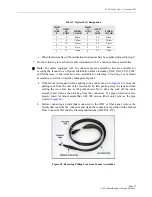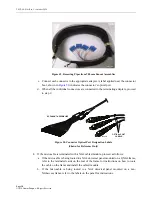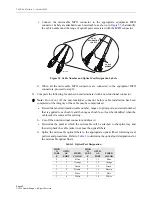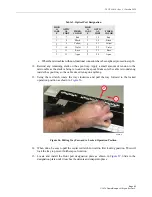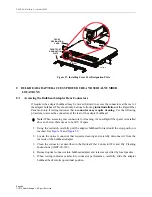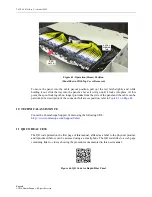
TECP-90-814 • Rev C • October 2020
Page 41
© 2020
CommScope
. All Rights Reserved.
4. Attach a draw wire or tape to the pulling swivel and then carefully guide the pulling swivel
with attached connectors into the conduit. Continue to guide the cable into the conduit
while the cable is being pulled.
5. Pull the cable through the conduit until the pulling swivel appears at the end of the
conduit.
6. Disconnect the pulling wire from the pulling swivel and remove the vinyl tape and pulling
swivel from the end of the cable.
7. Use the hand-wrap method to pull the cable to the point where the cable will be spliced or
connected. Dress and secure microcable at the termination point as specified by local
practice.
8. Adjust the microcable so any excess slack is accumulated at the Rapid Fiber Panel and
then rewind the slack on the spool.
9. Determine if the microcables are terminated with MPO connectors (connectorized cable),
or non-functional connectors (stubbed cable). (A special label (NON-FUNCTIONAL
CONNECTOR) is attached to microcables that are terminated with non-functional
connectors. The label is attached to the cable next to the connector boot.) If the microcable
is terminated with an MPO connector, proceed to step 10. If the microcable is terminated
with a non-functional connector, proceed to step 11.
10. Complete the following for each cable terminated with an MPO connector:
a. Remove the pulling eye from each MPO connector by inserting and twisting a
screwdriver or coin as shown in
.
b. Remove the connector dust cap and clean the MPO connector as specified in the
Multifiber-Push On Assembly Connector Cleaning Instructions (ADCP-96-150).
Caution:
Avoid using excessive force when unwinding microcable from the internal spool. If the
cable fails to unwind, check for obstacles or obstructions that would prevent the spool from
turning. The maximum recommended pull force that may be applied to the MPO connector
pulling eye, fanout assembly pulling sock stub connector pulling eye, or to the cable itself is 40
lbs. (18.14 kg)
. Use the hand-wrap method if pulling on the cable by hand.
Note:
The minimum recommended conduit or firebreak hole diameter is 1.1-inch.
Note:
If the cable will be routed to a splice enclosure for splicing,
do not
cut-off the non-
functional connector at this time. Removing the non-functional connector before pulling
has been completed may compromise the integrity of the cable.
Note:
After the cable has been pulled through the conduit, the remaining segments of
cable that are not protected by the conduit should be placed in an open trough system such
as the FiberGuide System, a cable rack system, or flexible tubing.
Note:
Microcables with stub end non-functional connectors look the same as microcables
with MPO connectors. Like MPO connectors, they are housed inside of black pulling
eyes; however, non-functional connectors are not optically terminated. They are crimped
to the cable jacket and strength member yarns. Non-functional connectors are cut off after
the cable has been fully unwound from the spool and is ready to be spliced.

